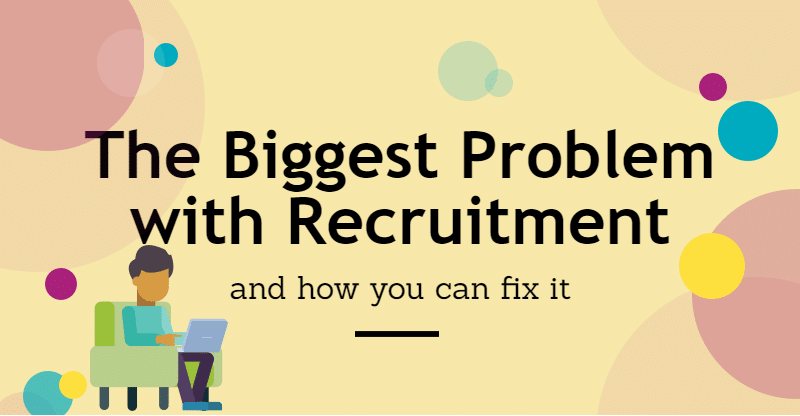
The Biggest Problem With Recruitment & How You Can Fix It
Let’s play a quick game. For the grand prize of maximizing profits, reducing turnover, boosting morale, and the overall success of your business, what’s the biggest problem your company faces with recruitment?
Is it:
- Retaining employees.
- Motivating employees.
- Preventing your employees from wasting their days scrolling through Facebook, or,
- None of the above.
If you’re like most business owners, big or small, the biggest recruitment problem you’ll face is finding skilled, quality employees in the first place. Bad hires will cost you money and dent morale, and bad management will result in broken, unproductive teams. Employees make it possible for your company to function, and great employees will make your business thrive.
But with so many unemployed, underemployed, or wanting to change careers, why is finding the right people so gosh darn hard? For most businesses, the problem isn’t a lack of perfect employees out there, but the way they’re approaching recruitment in the first place.
Here’s how to leap these hurdles, and create a flexible recruiting framework that sources your ideal workforce:
-
First Impressions Matter
Forget a generic job description that focuses on specific duties and how good the candidate looks on paper, and instead describe the highest standard of performance within that position. You can’t hope to get an amazing employee if you don’t require them to be amazing in the first place. Remember: skills, talent, and attitude, have the potential to make better employees than GPAs and long employment histories.
-
Streamline the Process
A lot of companies don’t even have a set hiring and recruitment process to begin with. Instead, hiring is a series of random, disconnected events, across of range of systems and sourcing solutions. Using a range of people or a different tool for every step of the process just makes everything more complex, costly, and time-consuming. This process, or lack therefore, is ineffective and overwhelming; a random process results in random, problematic employees. Establish a routine or invest in applicant tracking and onboarding software that makes recruitment simple again by handling everything in the one place.
-
Use Time Strategically
Time for a cliché: time is of the essence! Top-performing candidates are in the job market for 10 days, and yet the average hire time is 27 days! The employees of your dreams are out there; you’re just too slow to catch one.
On the employer side, there are greater demands on recruitment than ever before. You need to source more candidates in less time, but that means more tedious tasks to reel in high volumes of interviewees in the first place. But this lengthy recruitment process is costing you time, money, productivity, and those quality employees.
Labour hire systems for temporary staff can save you if you need someone instantly. But in the long run, you can save time, reduce stress and turnover, and increase performance, with a dedicated HR department or automated HR software. Such systems include applicant tracking, sourcing candidates, distributing job postings and searching resume databases.
-
Target Recruiting Efforts
- You can make the most enticing and descriptive job posting in the world, but are you showcasing it where your ideal employees are looking? Is the job easy to apply for?
Sometimes, online just isn’t enough to reach the entire scope of potential applicants. In the age of smartphones, less than 47% of companies give candidates the opportunity to apply via mobile devices. HR and onboarding software can increase your reach by posting your company on an easy to use platform that’s mobile compatible, and collaborates with multiple career and social media platforms. This gives candidates with the right work history, desires, success, and skills, direct access to your job listing. A wider talent pool increases your chances of finding the perfect fit, and you’ll never have to settle for an unqualified applicant.
-
Incorporate Data
Repeating the same mistakes is futile; make the most of real-time data to ensure that your recruitment process is effective and constantly improving. Collate data on different facets of the hiring process or various employee qualifications, or use HR software to do it for you. Review past hires, present performance, and rates of turnover, and identify correlations that may lead to better hiring decisions. What characteristics do your top-performing employees share? If you can optimize analytics in recruitment, you will increase retention, efficiency, and productivity.
If you can source and recruit high quality talent, the effects will ripple throughout your entire company. These simple steps will put you right on track for that grand prize, and more. If you’re not convinced your recruitment system is improvable, give our free trial a shot and see how quick and easy it can be.
For bonus points, let us know how you’ve improved your recruitment process below!